Best Floats and Weights Setup For Float Fishing Rivers
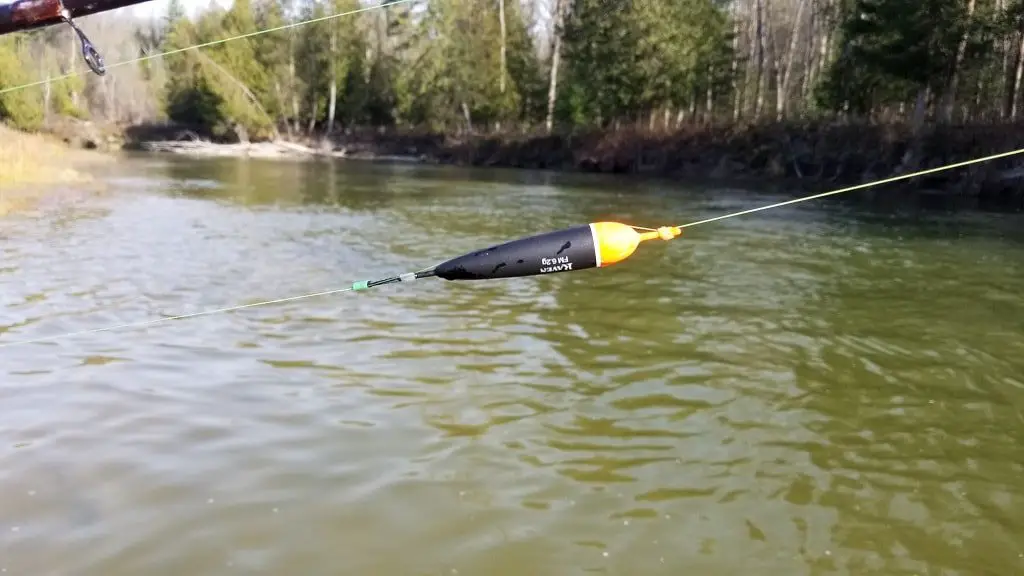
The proper floats and weights setup starts with using a float that is designed specifically for river fishing, and as a river fishing guide, I always use the right weights and the best floats.
Using the right size of leader and setting it up properly is critical. I always sure that the right amount of weights that are all placed in the right spot to ensure my client catch more fish.
I know there are probably hundreds of anglers that I have guided that have looked at my floats and weights setup when they arrive at the river. Because my setup is so effective, they copy and continue to use that same setup, as well as share it with others, which is great, because it’s easy and very effective for river fishing for trout, steelhead, and salmon.
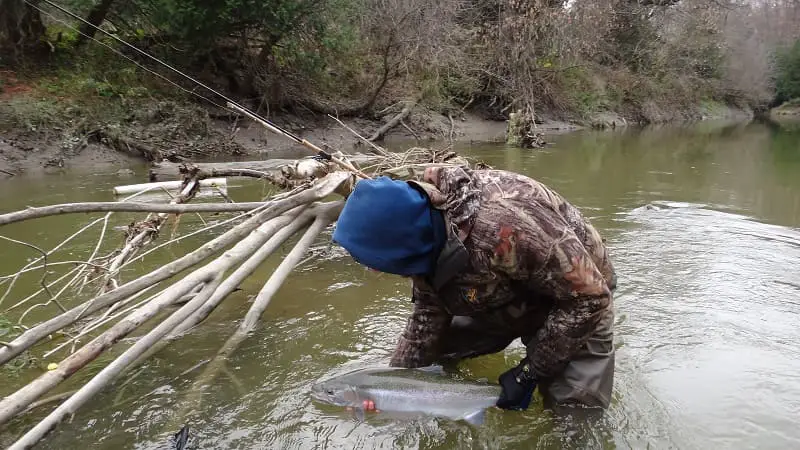
I’m not going to tell you that I invented this setup, I’m sure I’ve copied it from someone else, but after testing out many different leader setups, floats, and weight setups, I come up with a setup that is the most effective.
The Float: AKA The Bobber
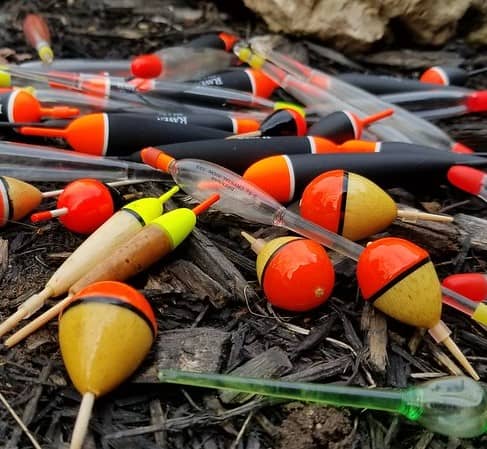
If I call it a bobber, please slap me!! In river fishing, we call bobbers “floats.”
Even the companies that make these bobbers for river fishing call them floats.
Bobbers are for lake and pond fishing, or for kids.
You first need to be sure you are using the right float for river fishing because not all floats are good floats. You also need to be sure that your float is not too deep, it’s not sinking, or that it’s not too high when floating in the water. It also needs to be floating correctly or sitting on the water right.
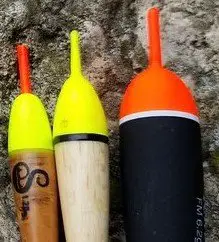
Sitting perfectly usually means only an inch or two of the float is sticking up out of the water.
Many floats have lines on the floats or color separations which help you determine where the float should be sitting.
Even clear floats usually have some sort of indicator of where the water level should come to. I would say, only 10 to 15 percent of length of your float should be sticking out of the water.
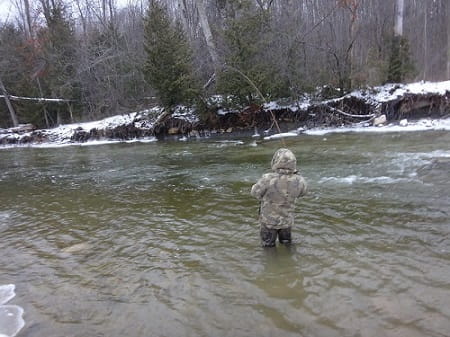
As an example, an orange top float should probably be sunk to where the float goes from orange to black, clear, or brown, or whatever the lower float color is.
To sink it to that level you need to have enough weight.
Float Color
The bottom of your float should be black, wood colored, or clear, and should be changed based on the conditions.
The top of your float is a matter of opinion, and I will give you mine.
Growing up and learning how to float fish, I was once told to use chartreuse-colored floats on cloudy days but not to use them on sunny days because they get lost in the surface glare. On sunny days I was told to use orange-topped floats.
Now, I use orange-topped floats all the time since it is proven to be the easiest to see in all light conditions.
Float Sizing
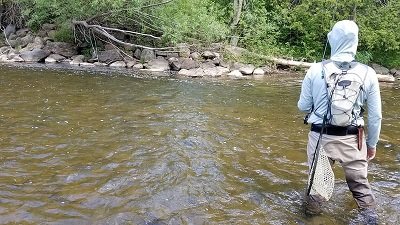
I determine my float size by the type of water that I or my clients are fishing, and possibly by their eyesight.
What I mean by eyesight is that if you fish long 80 to 100-foot drifts, you will lose sight of smaller floats first so a larger float might be required to get longer drifts.
It’s not uncommon for some of my older clients to lose sight of the float 30 or 40 feet before I do because I have better eyesight.
For this reason, I will often upsize the float so they can see it better. As long as the increased size does not affect the presentation or spook fish, a slightly larger float is OK.
It’s not just older guys that need a bigger brighter float.
If you have poor vision, a larger float with a larger orange top might be best in all types of water, however, the bigger the float the more you risk the fish seeing it and getting spooked by it.
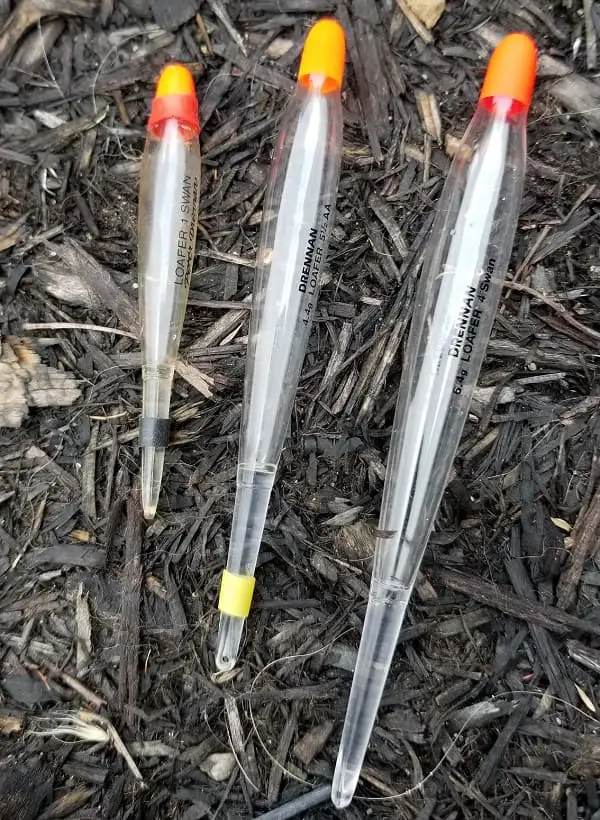
Small Clear River Floats
Regarding the type of water you drift, when fishing in slower water, shallower rivers, and smaller rivers, use the smallest floats possible.
In tiny creeks, a 2 or 3-gram float might be best.
Slower, smaller rivers, especially clear rivers, might be best fished with clear floats that won’t spook the fish.
The best clear floats are the Drennan Loafer floats.
Medium River Floats
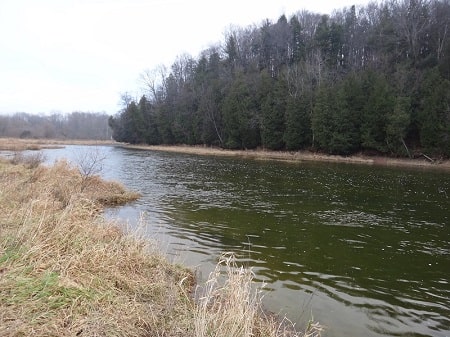
When fishing on medium-sized rivers of 20 to 30 feet wide, these types of rivers do not require a lot of weight to get the bait down, so a size 4 to 6-gram float should be good enough.
These rivers might also be deeper so you don’t need a clear float.
However, in very clear water with nervous fish, clear is best. I use a combination of Drennan Loafer clear floats or Raven FM floats depending on the depth and clarity.
Big Water Floats
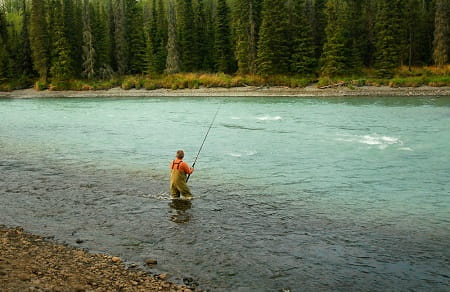
Bigger, faster, or deeper rivers that require more weight to get your bait down and keep it down will require a much larger float, maybe 8gm to 16 grams.
You may also need a bigger float to cast farther and to be able to see it better at distances.
Clear floats are generally not required in big rivers especially if the river is 5 feet or deeper. Raven FM floats are good options for bigger rivers.
Deep Water Floats
For deep-water fishing, consider a slip float with a bobber stop. I consider slip floats for water over 13 feet deep, or when the water is deeper than my rod is long.
A slip float will allow you to reel the float in close and that makes it easier to cast. You set the bobber stop at the desired depth.
Pointed Top Floats Are Best
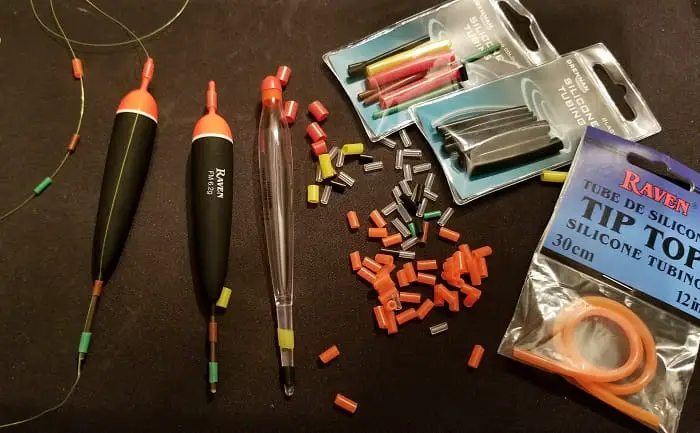
Also, floats with pointed tops are far superior to flat or round top floats due to their ability to help you present your bait and control your speed.
I’ll explain this more at Best Floats For River Fishing.
Also, be sure you connect your floats to the line properly. Make sure the float is secure enough that it won’t move on its own but that you are still able to adjust it so you can increase or decrease the depth.
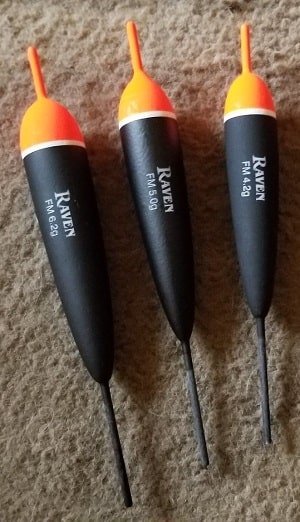
With all of these floats, they need to be weight to sink them to a proper level so they work better.
There are advantages to sinking the float deep enough, which include the float tracking straight in the water better or not being pushed around by the wind.
How to know how much weight to use for each float size?
First, use the right type of weights which are round split shots, without the wings, and be sure they are not the silver flashy cheap crap you get at the big box stores where you can also get all your clothes and home stuff.
Seriously guys, why make it harder for yourself to catch fish? Use what works, use what the guides use, and avoid what the rookie anglers use because they struggle to catch fish most of the time.
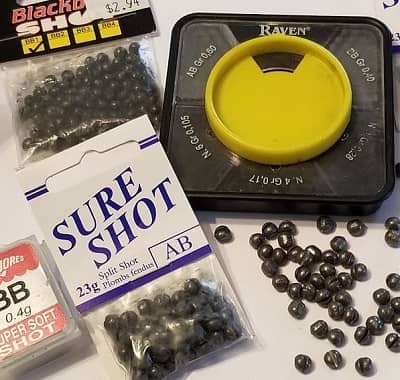
Now use the right weights and be sure weight your floats properly.
An example, a 6.2-gram float might be able to handle up to about 9 AB-sized shots, however, not all weight brands are classified as AB, or AA, or BB, some might be 1, 2, or 3 instead.
Therefore, it will depend on your brand of float, but you can figure it out manually.
Take your float, attach it to your fishing line and leave 10 inches of line below the float (no hook), put it in flat slow water, and keep adding weights to that 10 inches of line below the float until the float sits perfectly in the water, AKA, or sinks to the perfect depth in the water.
Then remember how many of that size weights you need for that float to be perfect.
If you use more than one size of float, you should start with your smallest float add enough weights until it’s perfect, then go up one size of float and add more weight until that float size is perfect, then go to a bigger one, and add more weights again until it’s perfect.
Record or remember all that information so you will know it for future trips.
I also try to use the same type of floats and the same brand of weights all the time otherwise changing floats or changing weights might mean you need to figure it all out again.
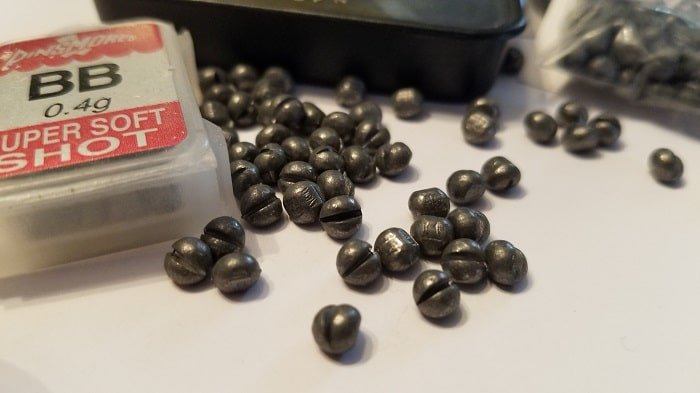
The right types of weights are important, and it does make a difference for many reasons.
I use the same type of weights when float fishing that I do when bottom bouncing, and when fly fishing.
See my page Weights For Fly Fishing: Everything You Need To Know if you want to know more about the weights that I use and recommend.
When you fish, use the right amount of weights based on the velocity and the depth of each spot and then change floats according to your weights.
Also keep in mind that when using stuff like weighted jigs for steelhead, the jig itself can add a lot of extra weight, therefore, you may need to go to a bigger float to accommodate for the extra weight, or use fewer weights knowing that your jig will add the weight you need to get down to the fish or give you a great leader angle.
I would usually go with fewer weights and a smaller float, over more weights and a bigger float unless I need that extra weight to cast a mile out.
Your leader is a huge part of your success when float fishing. But just having the right amount of weights will only do so much if your leader is not good, or if you don’t know how deep to set your float.
Therefore, these articles can help.
Tight Lines,
Graham

for a 6.2 FM raven float, would it be optimal to use 7 AAA instead of 9 AB since you’d have less shot to put on and be able to save more money?
I’m not a big fan of using giant split shots because I think the smaller shots give you a more even leader angle, however, I’m sure what you’re suggesting would work.
Good Luck,
Graham
Hi Graham,
I noticed in one of the pictures of your split shot setup, you only had 7×0.6 grams rather than the 9 you said. Do you typically only put 7 of them on a 6.2 gram float?
Hi Christian,
I will adjust the split shots based on the size of the float mostly, and sometimes the depth, and, I’ll be honest, occasionally some weights will fall off during use and I’ll be too lazy to add more, especially if it’s not effecting the float or the presentation.
Best of luck
Graham
thank you for all these articles. I’m still learning, haven’t caught one yet this year. with your articles tho I think I’ll be better off next time I hit the river. thanks again
Good luck, and don’t give up, there are lots of reasons why anglers do and don’t hook fish, keep learning and you will put the odds in your favor. I wrote an article called How To Catch More Trout And Steelhead Guaranteed where I discuss the thing many anglers do wrong or don’t do well and how those things can and do affect fishing. It may give you some ideas.
Good Luck,
Graham
What gram raven FM float do you perfer on creeks and which ones on rivers
Hey Joseph,
Your float size and type should be determined by the type of water you fish, and possibly by your eyesight. I’ve updated the page to be more clear on the types of floats and sizes for Small to large streams.
Best Of Luck
Graham
what is your opinion on blood run avon floats
Hey Sheldon,
I don’t have any experience with the blood run avon floats, however, I’ve used very similar floats, and although they are not my preferred shape they should work.
Good Luck,
Graham